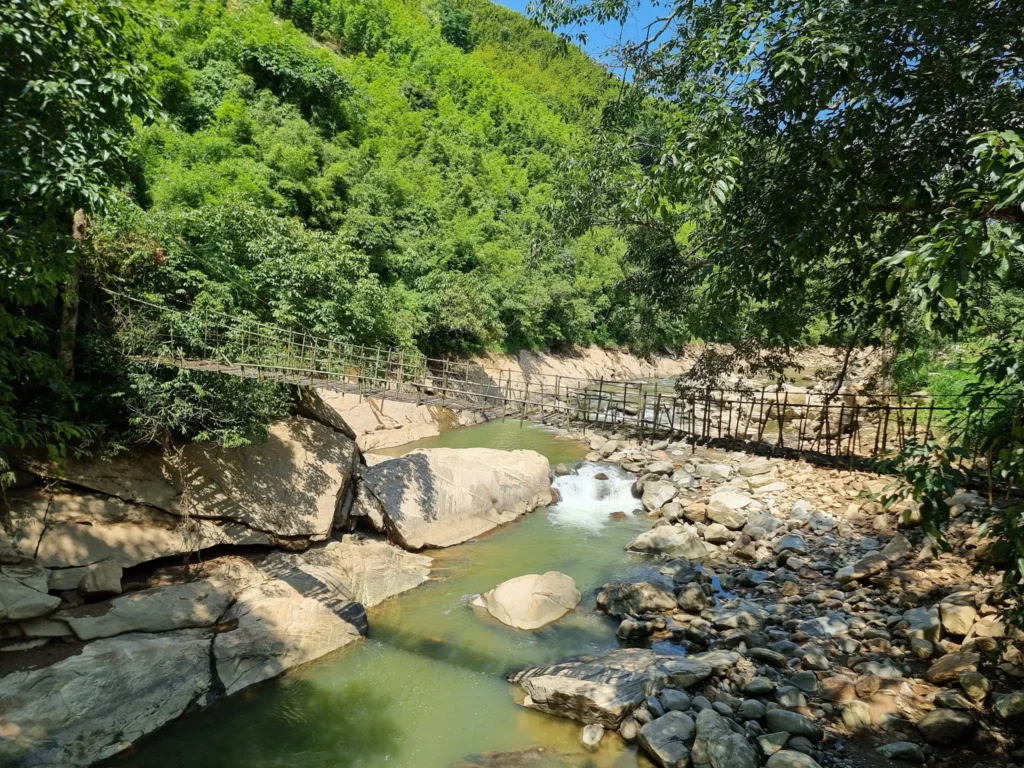
Muong Hoa Valley
Nestled in the northern mountains of Vietnam, Sa Pa is one of the most iconic destinations for trekking enthusiasts, offering both breathtaking landscapes and rich cultural experiences. One of the crown jewels of Sa Pa is Muong Hoa Valley, a stunning natural wonder that captivates every visitor with its terraced rice fields, picturesque streams, and awe-inspiring mountain views. In this guide, we’ll take you on a journey through Muong Hoa Valley, revealing why trekking Sa Pa in this beautiful region is an experience of a lifetime.
Muong Hoa Valley is located about 10 kilometers southeast of Sa Pa town and is a favorite among trekkers for its serene beauty and cultural richness. The valley is home to some of the most iconic rice terraces in Vietnam, where the Hmong, Dao, and Tay ethnic minorities have cultivated rice for centuries. These terraced fields, combined with the surrounding lush hills and mountains, create a unique and mesmerizing landscape that feels like stepping into a painting.
If you’re looking for a trek that combines natural beauty, cultural immersion, and a bit of adventure, trekking Sa Pa in Muong Hoa Valley should be at the top of your list.



The Best Time to Trek in Muong Hoa Valley
Timing is crucial when planning your trek in Sa Pa. Each season in Muong Hoa Valley offers a different kind of beauty:
Spring (March to May): The weather is cool and pleasant, and the fields are vibrant with blooming flowers. This is an excellent time for those who want to see the valley in full bloom while avoiding the summer heat.
Summer (June to August): This is the time when the rice terraces are at their greenest, creating a lush, vibrant scene. However, this is also the rainy season, so be prepared for occasional downpours and muddy paths.
Autumn (September to November): This is arguably the best time to trek Muong Hoa Valley. The rice terraces turn golden as the harvest season approaches, providing stunning photo opportunities. The weather is also cooler and drier, making it ideal for trekking.
Winter (December to February): While the valley may not be as lush, winter brings its own charm with misty mornings and a mysterious, serene atmosphere. However, it can get quite cold, so be sure to pack accordingly.
Cultural Encounters in Muong Hoa Valley
One of the highlights of trekking Sa Pa in Muong Hoa Valley is the opportunity to interact with the local ethnic minorities, including the Hmong, Dao, and Tay people. These communities have lived in the region for centuries, and their traditional way of life has remained largely unchanged. As you trek through the valley, you’ll have the chance to visit their homes, learn about their customs, and observe their daily activities.
Many trekkers opt for homestay experiences, where you can spend the night in a local family’s home. This is a fantastic way to gain insight into their culture, enjoy home-cooked meals, and support the local economy. The warmth and hospitality of the local people are often the most memorable part of a trek in Muong Hoa Valley.
Essential Tips for Trekking Sa Pa in Muong Hoa Valley
To make the most of your trekking Sa Pa adventure, here are some essential tips:
Hire a Local Guide: While it’s possible to trek in Muong Hoa Valley on your own, hiring a local guide can greatly enhance your experience. Not only will they help you navigate the trails, but they can also provide valuable insights into the local culture and history.
Pack Proper Gear: The terrain in Muong Hoa Valley can be challenging, especially during the rainy season, so make sure you pack appropriate trekking shoes with good grip. A waterproof jacket, sun protection, and plenty of water are also must-haves.
Respect the Local Culture: While trekking through local villages, it’s important to be respectful of the customs and traditions of the ethnic minorities. Ask for permission before taking photos, and be mindful of their privacy and way of life.
Leave No Trace: As with any outdoor activity, it’s crucial to minimize your environmental impact. Stick to designated trails, avoid littering, and consider supporting local businesses that prioritize sustainability.
Why Choose Sa Pa for Trekking?
Trekking Sa Pa offers a unique combination of stunning landscapes and cultural experiences that is hard to find anywhere else. The natural beauty of Muong Hoa Valley, combined with the rich traditions of the local ethnic minorities, makes it a trekking destination unlike any other.
In addition to Muong Hoa Valley, Sa Pa offers a variety of other trekking routes, including challenging hikes to the summit of Fansipan, known as the “Roof of Indochina,” and peaceful walks through bamboo forests and waterfalls. Whether you’re a seasoned trekker or a first-time visitor, Sa Pa has something for everyone.
Conclusion
Trekking in Muong Hoa Valley is more than just a walk through nature – it’s a journey through time, culture, and some of the most breathtaking landscapes in Vietnam. From the emerald-green rice terraces to the warm hospitality of the local ethnic minorities, trekking Sa Pa in this valley will leave you with unforgettable memories. Whether you’re looking for a short day trek or a multi-day adventure, Muong Hoa Valley offers a trek that’s perfect for you.
So, pack your bags, lace up your boots, and get ready to explore the beauty of Sa Pa’s Muong Hoa Valley – a true masterpiece of nature.
